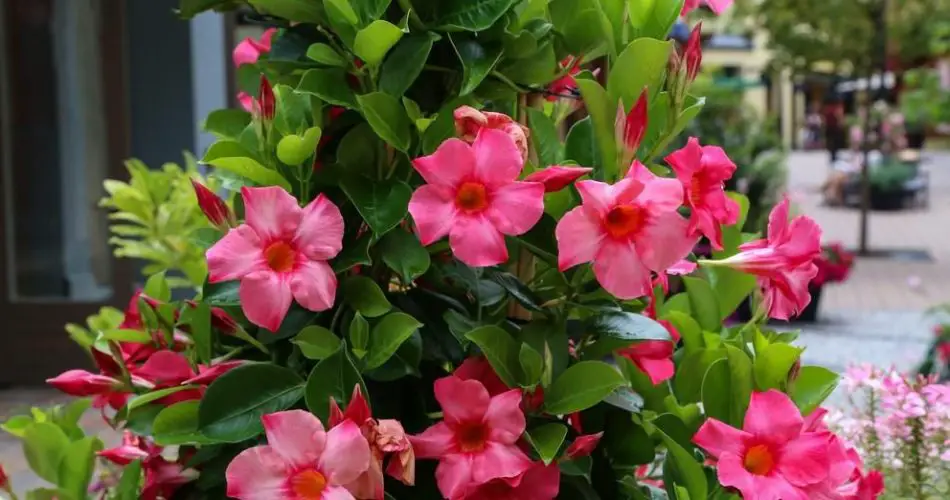Dipladenia Care Guide: Nurturing Blooms in Your Sanctuary
Positioning, watering, and autumnal pruning—three fundamental practices for tending to your dipladenia, a captivating climbing plant native to Central American regions that thrives on balconies and terraces. Adorned with bell-shaped flowers in hues of white, pink, and red, this ornamental wonder belongs to the Apocynaceae family, boasting nearly two hundred varieties, each with unique traits. Whether indoors or outdoors, nurturing this plant is a straightforward endeavor, demanding regular hydration during the sweltering season, coupled with a luminous setting and moderate temperatures.
Embracing Dipladenia: Growing Insights
Plant Characteristics
Dipladenia distinguishes itself with its generous bell-shaped flowers, reaching up to 5 cm in diameter, and glossy green leaves, creating an unmissable visual spectacle. Originating as a tropical liana, this plant, when provided with proper support, transforms spaces on your garden or terrace into vibrant corners adorned with splendid flowers.
Climate and Ideal Location
Thriving in a mild climate, dipladenia shies away from extremes, necessitating temperatures around 21°C for optimal growth. Shield it from scorching heat in the summer, ensuring a shaded haven. In winter, maintain a temperature between 10 and 14°C, basking in natural light within a cold-sheltered space. Year-round, place it strategically in a bright area, adapting to indoor or outdoor locations based on seasonal variations.
Soil Composition and Fertilization
Crafting an ideal soil blend for dipladenia involves combining garden soil, peat, sand, and leaves, emphasizing richness in organic content. Supplement the soil with humus or fertilize during spring and summer to enhance its nourishing properties.
Watering Regimen
During the summer, frequent watering is key for dipladenia, allowing the soil to intermittently dry between waterings. Tolerant of brief periods of drought, the plant can thrive with strategic humidity maintenance, achieved by placing wet gravel in the saucer and evening leaf spraying.




